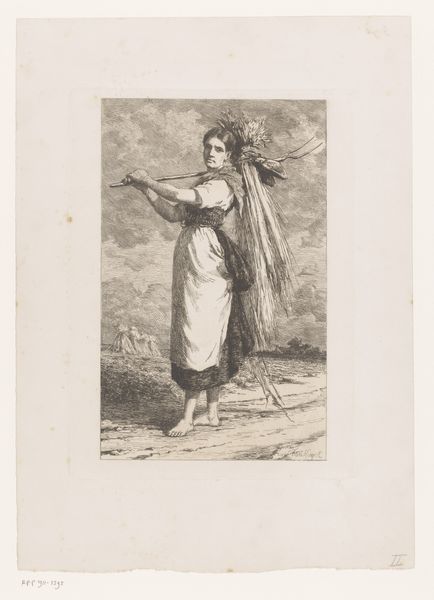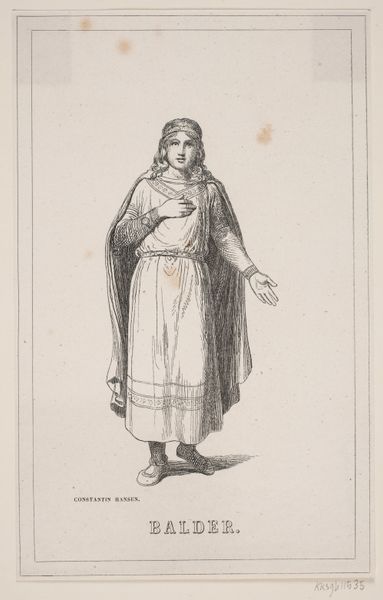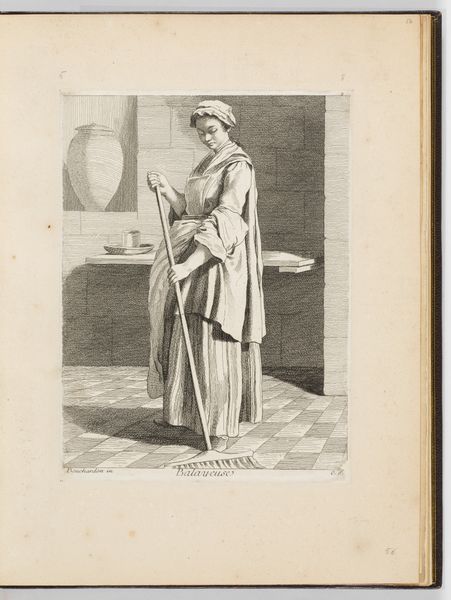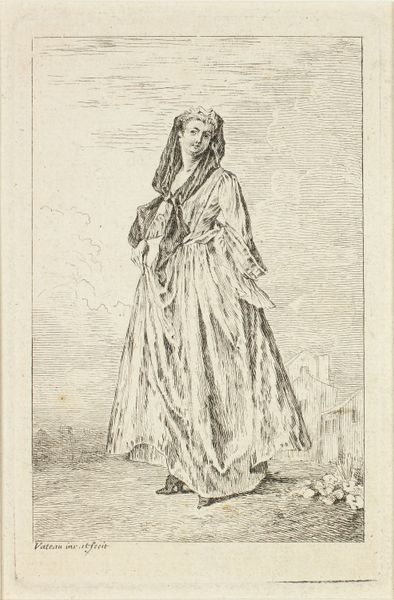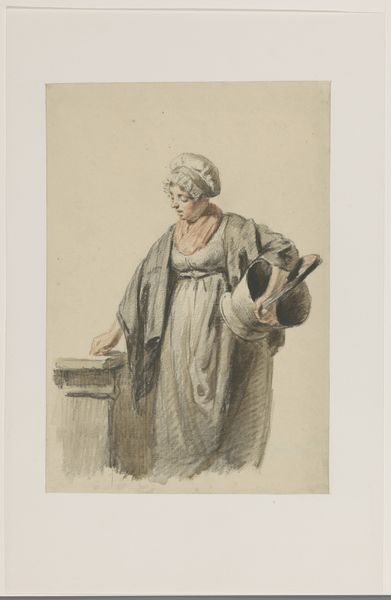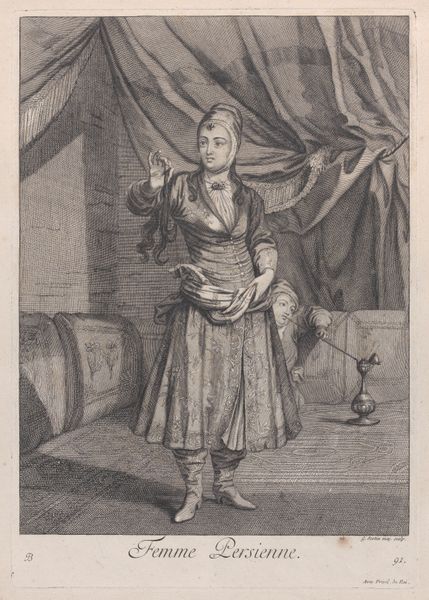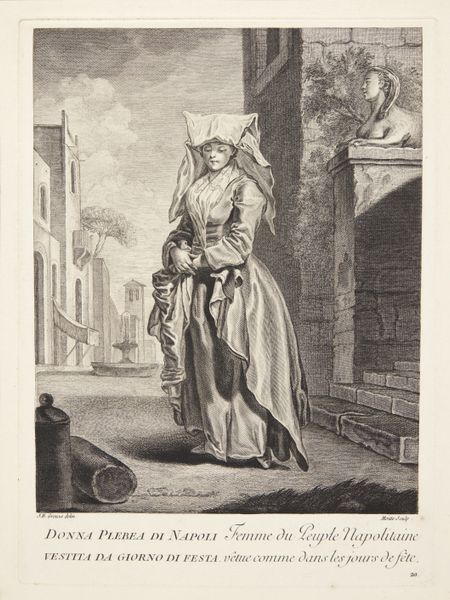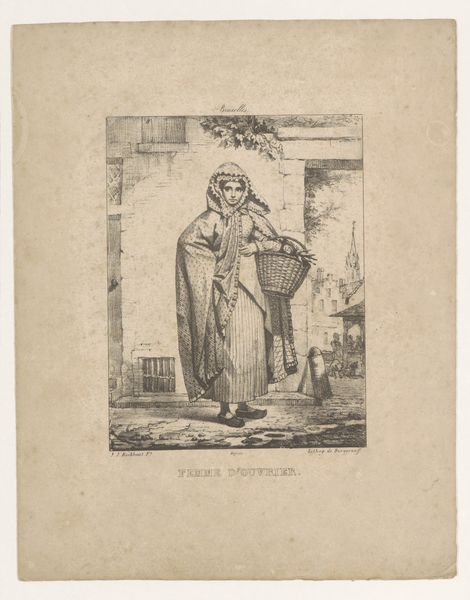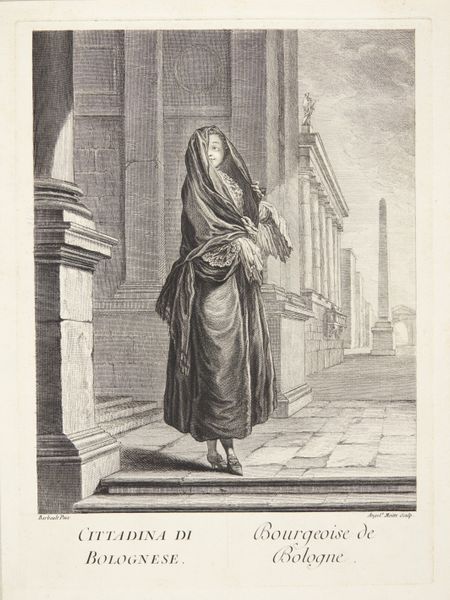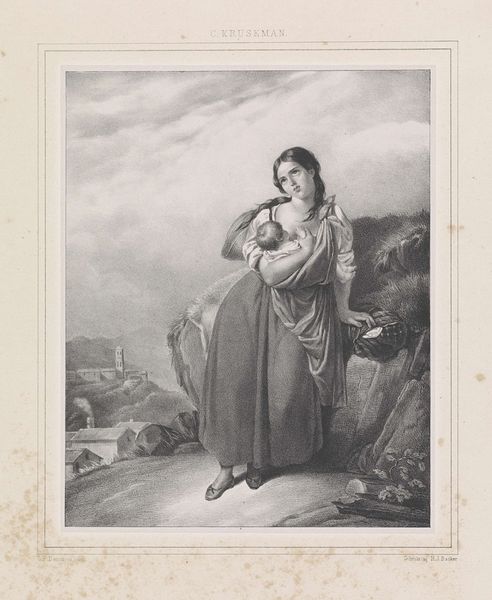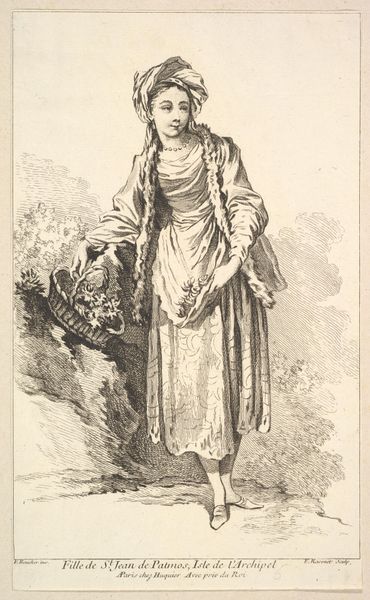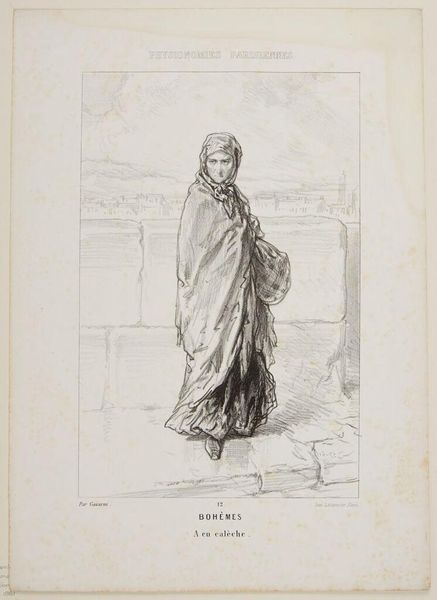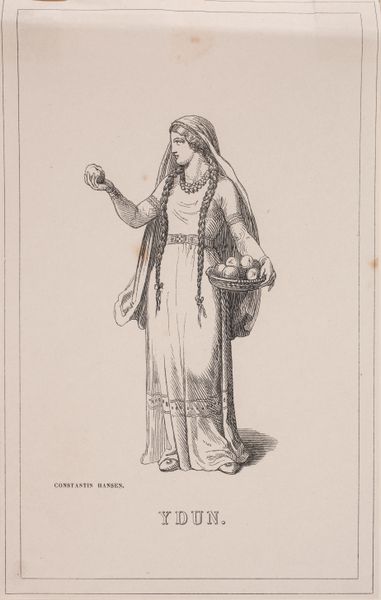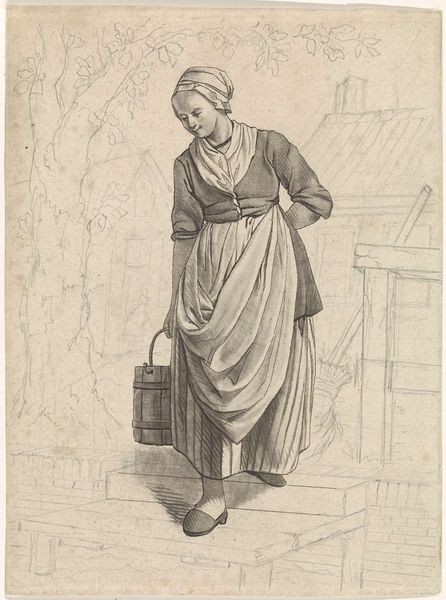
print, engraving
#
portrait
# print
#
genre-painting
#
engraving
#
realism
Dimensions: height 129 mm, width 80 mm
Copyright: Rijks Museum: Open Domain
Curator: Here we have "Verkoopster van oude lappen," or "Seller of Old Rags," a print by Ch. Reboul, dating roughly from 1826 to 1899, currently held in the collection of the Rijksmuseum. It’s an engraving, which was a very common form of reproductive printmaking at the time, enabling wider access to images. What are your initial thoughts on this one? Editor: Oh, she looks like she carries the weight of the world, doesn't she? Even in the small details of the engraving, there is something really solid and somber about her. She's holding up the goods, but it's not really a sales pitch, is it? Curator: Not at all. Reboul really captures the day-to-day labor of individuals existing within specific economic strata. Consider the title itself and its bluntness: “Seller of Old Rags.” There is an unvarnished directness that’s so compelling here. We see a figure defined by their trade. This artwork makes a point about the economy. The way this print captures the specific context in the material conditions in which these goods were produced, circulated and ultimately consumed – the worn cloths this woman would try to sell again… fascinating! Editor: Absolutely. And think about the technique! The painstaking process of engraving – making multiple near-identical prints of something like a Moscow street scene. Someone saw her—this anonymous woman— and felt something needed to be captured. The work immortalizes a mundane exchange as both portraiture and social commentary. There is so much care taken when the end result could be considered a simple item produced on a large scale. Isn’t that moving in its own way? Curator: Yes. There's also a lot to unpack regarding realism in this piece. The use of engraving enables the mass production of the prints. Yet, at the same time, this can also challenge what we might typically understand as "high" art and its creation process. It’s amazing how the artist captures these tiny gestures, really inviting the viewer to ponder the process behind it all. Editor: You're right. Seeing the piece this way invites reflections on labor itself. There is this delicate interaction between a woman with worn rags to sell set against these ornate backdrops: cupolas of old Russian churches and refined architectural embellishments. Almost theatrical, wouldn't you agree? What's so exciting to me is this blend between harsh reality and unexpected glamour. It brings some light into all this work and hardship. Curator: Well, by looking at Reboul's approach in "Seller of Old Rags," one can clearly appreciate how it represents 19th-century approaches to art and labor in very material terms. The printmaking tradition and genre style also speak volumes. Editor: Ultimately, that's it, isn't it? It has layers upon layers to reveal! It’s really been such a simple joy to unpack.
Comments
No comments
Be the first to comment and join the conversation on the ultimate creative platform.
